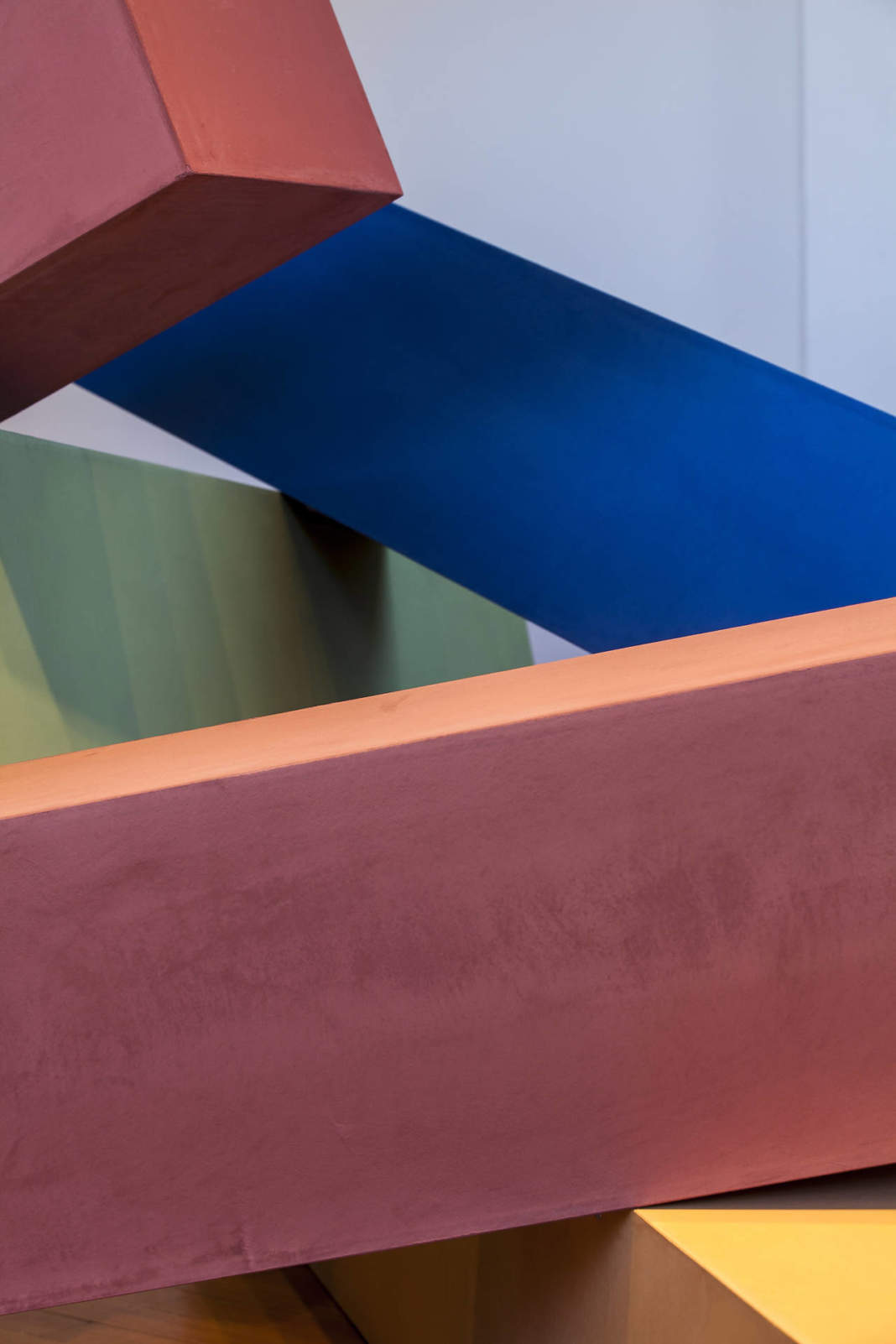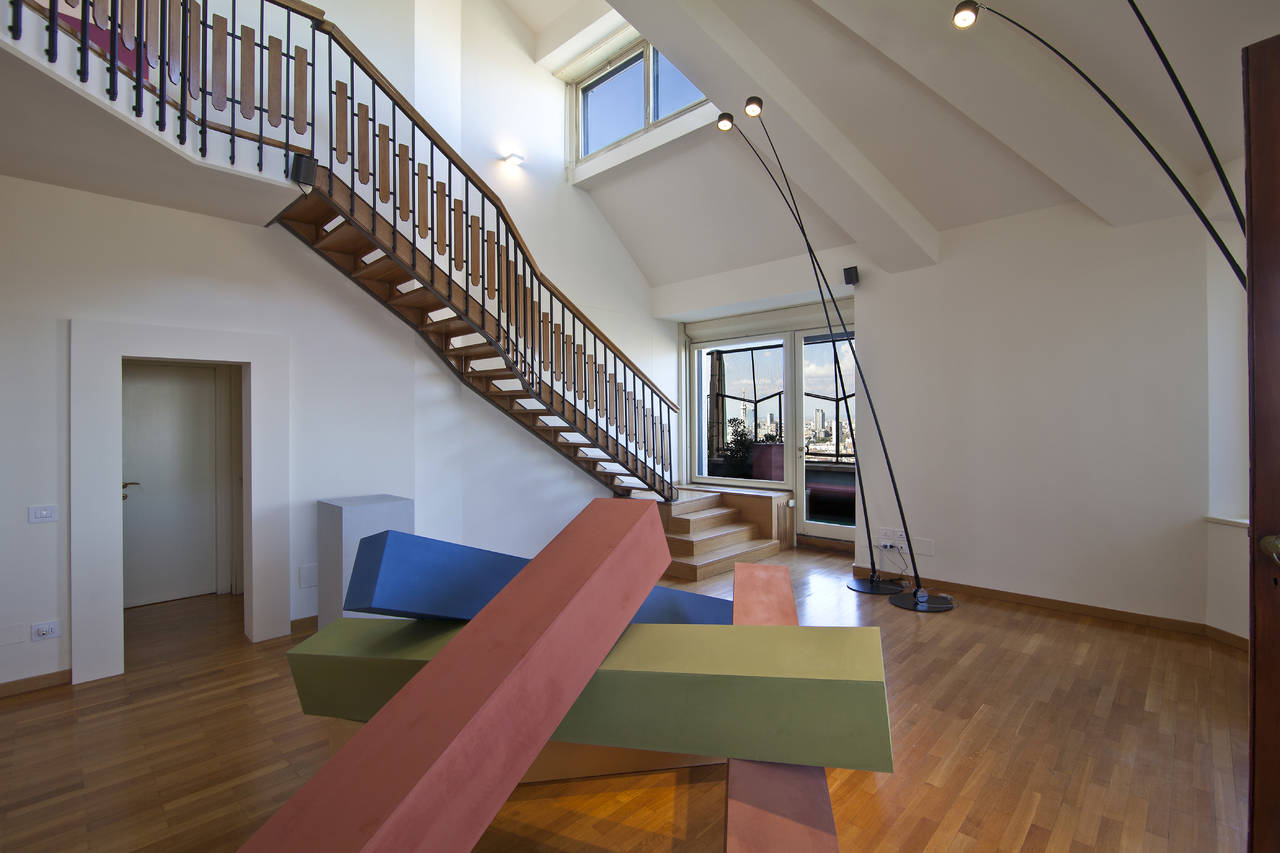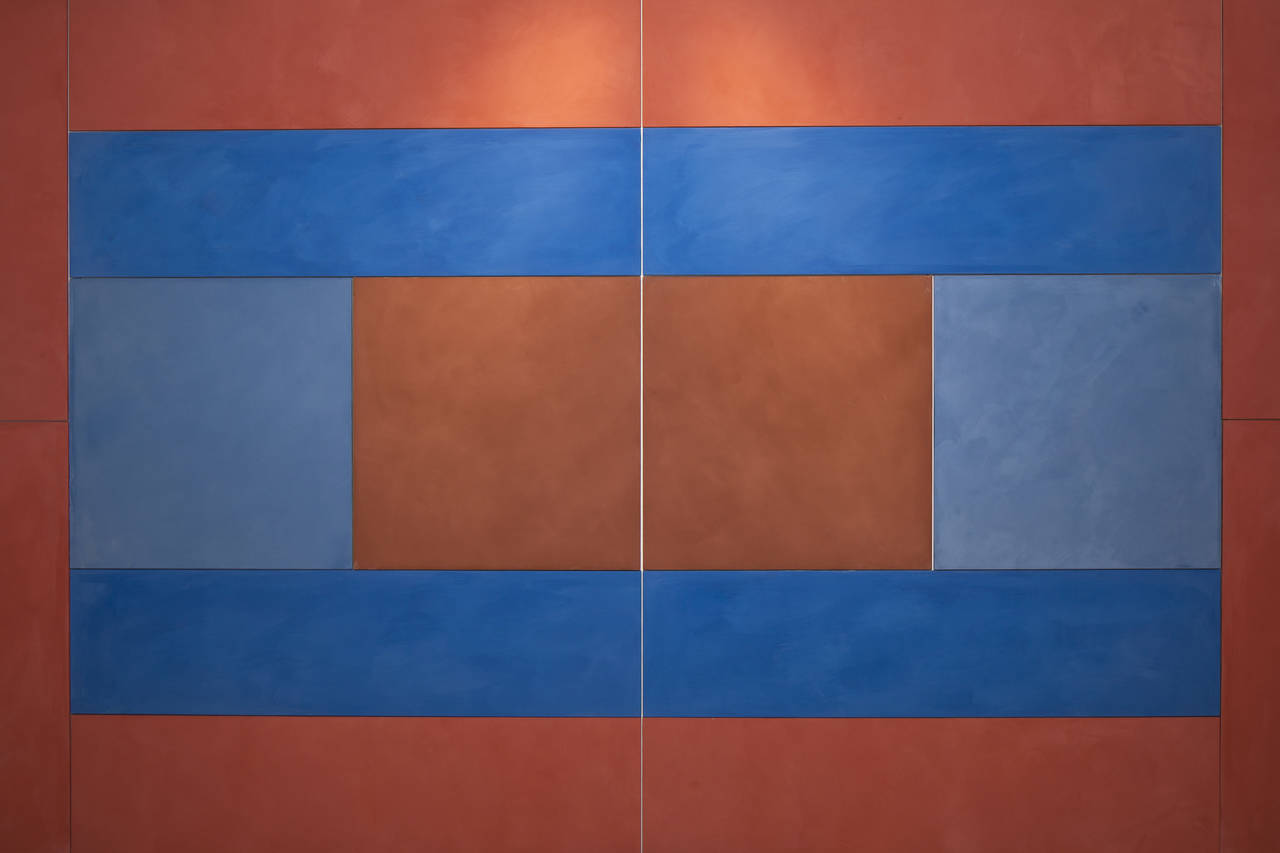The aim of the whole activity of Oikos is to combine colours and materials to interpret the uniqueness of each single project, the specificity of each area and the character of the surfaces of the architecture and of contemporary design. A path taking over thirty years to cover, co-operation with the most important names of the international design scene, called upon to work around these issues to develop collections of colours with exclusive colour and material solutions. The strength of Oikos colours and material is that of originating from a specific thought, from a unique creative moment: "Oikos, the Sense of Matter" will this year find its greatest expression in the collection thought up and desired by Giulio Cappellini, presented during the Milan Design Week, and which interprets in a contemporary key the fascination of the great master Tiepolo and his great mastery in using warm and light hues to create majestic frescoes. We have looked in depth at the process leading to the definition of the Tiepolo collection together with Giulio Cappellini and with Claudio Balestri, Oikos managing director.
Area: How did your co-operation with Giulio Cappellini start, and why did you entrust him with studying a new range of colours?
Claudio Balestri: The reference to the great Masters of the Italian decorative tradition, who for centuries made our country great, is one of the founding principles of Oikos, together with the continuous co-operation with architects and designers in order to conceive exclusive projects according to solutions that explore constantly new materials, processing and finishes. Our commitment to research and the desire to propose avant-garde solutions but with a look towards the past, to our great artistic tradition, have led us to invent contemporary materials that incorporate the knowledge and the fascination of the tradition of Italian craftsmanship. The fact that we shared these values led to our co-operation with the architect Giulio Cappellini, the ambassador of excellence of Italian design, extremely sensitive to the subject of colour and who has an immense artistic culture: tradition and contemporariness become the foundations of a common feeling in implementing a project combining the contemporary nature of the design with respect for tradition.
Area: What are the reference points of the collection? Its inspirations?
Giulio Cappellini: Tradition and contemporaneity are the foundations of a common understanding and give rise to the creation of the Tiepolo collection, which combines design with respect for tradition. In thinking up the new collection for Oikos, I wanted to go back to the shades, the reflections and the textures of great Italian art. True talent is timeless, for this reason I drew inspiration from an immense artist such as Tiepolo. The incredible hues of his colours fit in very well with and interpret contemporary interior architectures, clear frescoes or only slightly dulled by the passing of time, generate different interpretations that are declined in the various finishes of the Tiepolo collection.
Area: How does the productive path of the Tiepolo range develop concretely starting out from the initial idea up to actual creation?
Claudio Balestri: Thanks to the co-operation of Vicky Syriopoulou, Oikos's colour designer, we have worked very closely with Cappellini to go in depth into materials and colours: each colour was investigated in order to identify the incredible shades and the plasticity of the reflections and of the textures inspired by one of the greatest representatives of 18th century Venice but still extremely contemporary.
Area: What are the main features of the chosen colours? Do they have particular visual effects in common?
Giulio Cappellini: The colours, sometimes faint and almost impalpable, sometimes full and striking, give rise to a palette with a great visual impact, making it possible to play by placing colours that clash with each other close or putting together a succession of hues.
Area: Of how many colours and finishes does the collection consist, and how was the final colour range decided upon?
Giulio Cappellini: The Tiepolo colour collection consists of 56 colours offered with 5 different finishes: satin finish, opaque and pinstriped, which can be made with a single product, fresco and material by combining two different products. The choice of colours and of shades of the collection is the synthesis of Italian decorative tradition with the contemporary nature of the design.
Area: What sort of use did you think of for this collection? Are there some types of space in which you think they can be exploited best?
Claudio Balestri: The choice of the colours and of the shades of the collection is the synthesis of Italian decorative tradition with the contemporary nature of the design. The colours, sometimes faint and almost impalpable, sometimes full and striking, give rise to a palette of great visual impact, making it possible to play by putting the colours that clash most close to each other or bringing together a succession of hues. Vicky Syriopoulou and Giulio Cappellini have identified precise Moodboards, chromatic combinations, that offer suggestions for both classical and modern settings.
Area: What are the differences between conceiving a colour for furnishings or a piece of furniture and doing it, instead, for a surface?
Giulio Cappellini: In the past rooms were neutral, often white, and their colour was determined by the furniture. Nowadays the colour of the room has the same value and importance. What is important is to achieve the correct balance between the surfaces and the furniture. So conceiving a colour for a room is just as important as conceiving a colour for furnishings.







